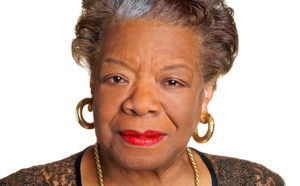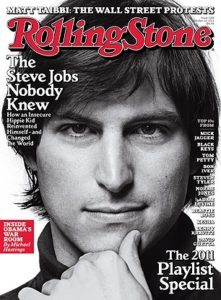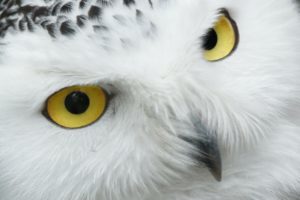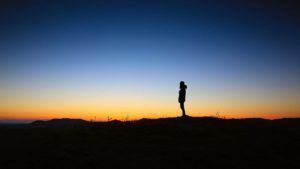Kim Hermanson's Blog, page 34
September 14, 2017
Maya Angelou
My favorite poem of all time is by Maya Angelou, called Elegy:
I lay down in my grave
and watch my children
grow
Proud blooms
above the weeds of death.
Their petals wave
and still nobody
knows the soft black
dirt that is my winding
sheet. The worms, my friends,
yet tunnel holes in
bones and through those
apertures I see the rain.
The sunfelt warmth
now jabs
within my space and
brings me roots of my
children born.
Their seeds must fall
and press beneath
this earth,
and find me where I
wait. My only need to
fertilize their birth.
I lay down in my grave
and watch my children
grow.
I shared this in a writing group one time and most found it dark and depressing. To me it expresses great beauty, as well as the profound truth that each of us has beauty to share in this world, whether it is through bearing children and “fertilizing’ their growth, or whether it is through any other form of creative expression. Creativity is about caring. When we do something with great love and attention, we’re in the creative process. We are being generative. And whenever we’re creating (generating), we are lovingly offering ourselves and our creative products to future life. The whole cycle of nurturing birth and “fertilizing” the next cycle of life is so profoundly beautiful to me.
I’ll end with more wisdom from Maya:
A bird doesn’t sing because it has an answer. It sings because it has a song.
May we all find our songs.
 source: https://beamingnotes.com
source: https://beamingnotes.com
Steve Jobs: “Art and beauty really do matter”
 Rolling Stone Magazine, October 27, 2011
Rolling Stone Magazine, October 27, 2011In 2011, Rolling Stone editor Jann Wenner paid tribute to Steve Jobs with in in-depth cover story. Wenner wrote: “He knew in his soul that how a thing looked and felt was part of the inherent truth and importance and honesty of the thing itself… [he believed] that art and beauty really do matter, and that people will respond to them if they are offered.”
Jobs believed that the “consumer would respect a strong aesthetic point of view, even if it wasn’t what they were asking for.” The only college course that Jobs mentions as important is a calligraphy class, which taught him about aesthetics and beauty.
Perhaps a love of art and beauty is fundamental for any kind of revolution… Perhaps it’s the foundation for change.
Fun quick virtual…READINGS! Only $25 (for a limited time…)
 For those who are tired of talking about the same issues over and over…
For those who are tired of talking about the same issues over and over…
Virtual Readings are a fun, easy, quick way to get unstuck and open new possibilities.
They allow you to tap into Source energy to get answers, direction and a healing shift. Fill out the form and receive your Reading back within a day.
Years ago I worked as a psychic and going into this mystical dimension that lies beyond the linear mind is what I’m gifted at. I’ve been wanting to offer something that would use these skills, be fun and easy, but also draw on and develop your own abilities to work with your soul’s creative energies. These Readings are for those of you who know that your true answers lie below the surface of your linear mind. They rest in another realm of knowing, another state of consciousness.
Here’s how it works: Go to the Readings Page on my website (www.kimhermanson.com) and fill out the form. Write your question—something you’ve been stuck about, something that you want to shift, something you want insight on, and along with that question, give me an image—whatever image pops into your mind.
After I receive your form and payment, I will send you back a reading within a day that will shift your energy, change your perception, and lead you to a breakthrough.
Here’s a couple of recent comments about these quick, virtual readings:
“Your reading touched a deep and profound part of me that I thought had been long lost.” ~ Tiffany Delaney, business owner
“I love this reading, it’s so right on! I felt a significant shift and relaxing in my body. I feel totally differently about starting my business now.” ~ Carleen Goetze, massage therapist and coach
“Amazing! When you sent me the image of the cliff and its message, everything shifted. I feel empowered on a whole new level. You are so incredibly tuned in.” ~ Jim K.
“Your reading shifted, not only my energy in my romantic relationship but several other relationships/areas of my life as well. In both my body and energy, I feel a huge sense of relief and relaxation. Your gifts/wisdom/insights are so powerful and healing!” ~ Talia Walsmith, Professional Organizer and Simple Living Coach
Virtual Readings are perfect for those who want an inexpensive way to tap into the metaphoric dimension on your own. For those of you who would rather work with an experienced guide that can take you to a deeper place than you can get to by yourself, click here for a Doorway session.
September 4, 2017
What is aesthetic space and why is it important?
 Philosophers throughout history have asserted that “the fundamental nature of the world is aesthetic” (Alfred North Whitehead, Gregory Bateson,James Hillman, Martin Foss,Donald Winnicott to name a few.) The word aesthetics comes from the Greek word “aisthenesthai” which is the ability to perceive. James Hillman writes, “Aesthetics in this primordial sense involves sensing the things of the world in their particularity and being affected by the many ways things present themselves.” Hillman often quotes an ancient philosopher named Marsilio Ficino who said that the world is an animal (meaning the world is alive and speaking to us.) The world shows itself to us as a living being; each thing has a face and calls for our attention. Our response to this call is aesthetics.
Philosophers throughout history have asserted that “the fundamental nature of the world is aesthetic” (Alfred North Whitehead, Gregory Bateson,James Hillman, Martin Foss,Donald Winnicott to name a few.) The word aesthetics comes from the Greek word “aisthenesthai” which is the ability to perceive. James Hillman writes, “Aesthetics in this primordial sense involves sensing the things of the world in their particularity and being affected by the many ways things present themselves.” Hillman often quotes an ancient philosopher named Marsilio Ficino who said that the world is an animal (meaning the world is alive and speaking to us.) The world shows itself to us as a living being; each thing has a face and calls for our attention. Our response to this call is aesthetics.
Hence the word “aesthetic space”…because it’s only when we make space for beauty, that beauty presents itself to us. We pause, take a moment to notice and appreciate the particulars of some thing, and enter aesthetic space.
Much of the impulse for writing my book, Getting Messy: A Guide to Taking Risks and Opening the Imagination, stemmed from my sorrow and despair at spending so many years in dry, joyless educational settings. I have always had a strong yearning to reframe the experience of teaching and learning as beautiful, life-giving, creative processes. To teach (as well as to learn), requires courage, an open heart, and the willingness to be vulnerable. But instead of noticing, appreciating and honoring this inherent beauty and vulnerability, our focus in education has been on achieving goals–which focuses our attention on some abstract thing in the future. When we’re focused on the distant future, we’re not in the beauty of the present moment….we’re not in a place of depth.
Getting Messy is a call for aesthetic space in teaching, training, coaching and mentoring relationships.
Aesthetics is closely linked to beauty, if we define beauty not as “refinement” or “polish,” but rather as feeling the depth of something. Another way to think of beauty is feeling with our hearts. Elaine Scarry, professor at Harvard, wrote in her book On Beauty and Being Just:
* beauty attends with it a sense of abundance
* beauty makes possible a moment of largess or generosity
* beauty can usher in forgiveness
* in the presence of beauty, we have an opportunity to heal
In A Portrait of an Artist as a Young Man, James Joyce wrote that beauty is “the communication of the hidden power behind the world, shining through some physical form.”
When we teach, train, coach, and mentor, we’re serving something beyond ourselves. If we’re aware, we can recognize beauty shining through the physical form of our clients, students, or group. Ideally, we can make space for that beauty. Paradoxically, making space for beauty greatly facilitates learning, because it fuels inspiration and passion–the desire to learn.
The writer Iris Murdoch said that beauty is anything that aligns us with unselfishness. Or to say it another way, beauty is the “process of un-selfing.” At our best, as teachers, trainers, coaches and mentors, we are serving something greater than ourselves. This is aesthetic space.
Five things you didn’t know about the creative process

It’s destructive. The creative process is as much about destruction as it is making something new. It needs space, and one way the creative process makes sure it has that space is to clear out the old or what’s no longer working. It will destroy whatever is in its way. (Don’t worry, if you really embrace your creative process, you won’t have much of a say in what gets destroyed.)
It’s fierce. The creative process will make you face your greatest terrors. In the late 1980s, Chicago promoted tourism to its city by claiming that Chicago was “not for sissies.” The creative process is not for sissies either. If you have a vision or dream, you can rest assured that you will be asked to face your fears along the way. All of them.
The darkness is where the juice is, not “the light.” As humans, we are forever looking around us, in search of the next idea, opportunity, recognition, reward. But the truth is, when it comes to the creative process, mulling around in the dark muck is where real life lies. If you need nourishment, ideas, or inspiration—go to that place of dark muck…wherever that is for you. For me, it’s imagining myself as a deep root immersed in dark, fertile soil. In that dark place, I can’t “see” with my regular eyesight, I can only feel my way.
The creative process is the core of who we are as humans, it’s not a leisure activity. For many, creativity is viewed as a supplemental luxury—something they do once in a while (take a pottery class, start a garden) when they have a free evening or weekend. But the truth is, all of human endeavor is a creative process—learning is a creative process; social change is a creative process; the natural world is a creative process. Creativity is not supplemental.
The creative process wants you to slow down, not speed up…but it’s a certain kind of slowing down. The creative process does not want passivity, it wants quiet alertness. Eckhart Tolle describes the condition of “extreme wakefulness” as one similar to a cat’s state of mind—when she waits for hours watching the mouse hole for the mouse to appear. The cat is not moving, it has slowed w-a-y down, but it is far from passive.
The creative process is destructive, fierce, dark, mucky and ornery (polite people might call it “non-linear”). It demands and deserves our respect.
(original post was published on this site in April 2013)
August 30, 2017
Going beyond academic learning…
 When I was in school, I loved the precision and tidiness of it—each class a container with a tidy list of assignments by week. All these fascinating subjects, like chests full of jewels, and if we only sign up and listen, we might uncover some of those jewels. Looking at new syllabi at the beginning of a semester, going out and purchasing new books at the bookstore. The whole process was exciting and full of fresh adrenaline—like gifts would lie behind that door, for sure. But often, the sense of excitement turned into a bit of drudgery, as we slogged through the material and assignments…until finally, at the end I just wanted the whole thing to be over.
When I was in school, I loved the precision and tidiness of it—each class a container with a tidy list of assignments by week. All these fascinating subjects, like chests full of jewels, and if we only sign up and listen, we might uncover some of those jewels. Looking at new syllabi at the beginning of a semester, going out and purchasing new books at the bookstore. The whole process was exciting and full of fresh adrenaline—like gifts would lie behind that door, for sure. But often, the sense of excitement turned into a bit of drudgery, as we slogged through the material and assignments…until finally, at the end I just wanted the whole thing to be over.
When I finished my Ph.D. at the University of Chicago, I was so burnt out on reading that the sight of a book or words on a page made me physically sick to my stomach. Even the words on the back of a cereal box swam in front of my face and made me nauseas. So I gathered together the stacks of notes, literature, and rough drafts related to my dissertation, and dumped them into the massive recycling container at the corner of Ashby and MLK in Berkeley. I stood on top of the ladder and watched as seven years of academic research dropped away in front of me, never to be seen again. Throwing away all scraps of information related to a PhD dissertation that I spent years working on gave me nightmares. “Surely I must have just thrown away something that I would need someday?”
After I received my PhD, the only direction I could turn was toward the creative arts. I took pottery and creative writing classes, bought paints and started painting. The creative made me feel spacious and free—it was life-giving. I became committed to living a creative life.
When I started teaching, I found myself split—on one hand was…art, image, beauty and creative process. On the other hand, teaching and learning which I also loved. They seemed hopelessly separated. Over the years, as I’ve continued to pursue the question of how we humans learn, those two loves have come together.
Decades of research has clearly demonstrated that creative process and metaphoric images are our native language.
At a deep level, we learn through metaphoric images.
When I discarded my books and academic papers, what I really wanted was to learn at this deeper level.
Might you be ready…to tap into the metaphoric images that lie beyond your rational thinking mind? That’s where true wisdom lies.
August 28, 2017
Opening your money portal and… making significant change
 A couple months ago I led an Open Your Money Portal teleclass and I was fascinated to see what would show up for people. I presumed that when we tuned into the metaphoric realm, people’s blocks about money would come through. But that’s not what happened. Instead, for nearly all of the participants that I worked with, the imagery and Source energy that showed up wanted to move them to a different vibrational level. Many of these Source energy vibrations were of a “higher” or “lighter” level as in a woman who received the image of a seagull that was soaring higher, above the flock. But others’ images and energies were of going “deep” … into sacred earth or sacred waters.
A couple months ago I led an Open Your Money Portal teleclass and I was fascinated to see what would show up for people. I presumed that when we tuned into the metaphoric realm, people’s blocks about money would come through. But that’s not what happened. Instead, for nearly all of the participants that I worked with, the imagery and Source energy that showed up wanted to move them to a different vibrational level. Many of these Source energy vibrations were of a “higher” or “lighter” level as in a woman who received the image of a seagull that was soaring higher, above the flock. But others’ images and energies were of going “deep” … into sacred earth or sacred waters.
In hindsight, what happened makes so much sense… because in order to “open your money portal” you’re not going to be able to stay in whatever place you’ve been vibrating at and living at.
Carl Jung wrote that no serious problem is ever solved “at its own level”—instead, something takes us “beyond” the situation to a place where the problem is not “solved” in a rational way. We’ve merely moved beyond it. Einstein said something similar: “No worthy problem is ever solved within the plane of its original conception.”
So in order to be at a different income level (or whatever other big change you would like to make in your life), “knowing your blocks” and “working on your issues” is ultimately not going to get you anywhere. That process might help you become really smart about what your issues are and perhaps give your mind some pleasure in coming up with a brilliant plan for “change.” But no real change will happen.
Real change requires that we enter a different vibrational level and that’s not something our minds can help us do. (In fact, our minds will want to keep us at where we’re at.)
Your true answers lie beyond your very smart brains. They rest in another realm of knowing, another state of consciousness.
If you would like to enter this realm and make real change in your life, join me for a Doorway session.
August 27, 2017
Following the magic
 When we follow the creative, magic happens…meeting people we never would have expected, finding ourselves in new places and situations. We’re no longer following a ‘schedule’ or ‘to do’ list, we’re following the beauty and energy of the moment.
When we follow the creative, magic happens…meeting people we never would have expected, finding ourselves in new places and situations. We’re no longer following a ‘schedule’ or ‘to do’ list, we’re following the beauty and energy of the moment.
Our ego is naturally resistant. It wants us to follow a schedule, get-things-done, and have a life that looks like regimented and proper or just like other people’s lives…so that it can feel safe and comfortable. The truth is, our ego is never going to feel comfortable. It doesn’t want you to have a big life that takes you into uncertain terrain.
But the creative doesn’t care about any of that. The creative is the voice of your Spirit, it will always move you into the most beautiful, expansive, generative terrain.
Last night I had dinner with two new friends and we lingered for several hours after the restaurant closed, sharing our passions for music, the creative process, and the magic of metaphoric wisdom. Click here for a little taste of that magic:
What does your heart say?
 Over a century ago, Rudolph Steiner said the greatest discovery of 20th century science would be that the heart is not a pump but vastly more, and that the great challenge of the coming age of humanity would be to allow the heart to teach us to think in a new way. How does the heart speak?
Over a century ago, Rudolph Steiner said the greatest discovery of 20th century science would be that the heart is not a pump but vastly more, and that the great challenge of the coming age of humanity would be to allow the heart to teach us to think in a new way. How does the heart speak?
The heart speaks through metaphor.
This wisdom of the heart is not new, it’s ancient. It’s just that we’ve long forgotten it. The earliest humans did not have words—they used their physical bodies through gesture, facial expression, sounds, and posture to convey messages to one another. They painted pictographs on cave walls, communicated through visual signs, and learned by sensing, seeing, and touching the world around them. Thunder, rain, wind, plants and animals were all sources of learning and knowing. As James Hillman writes, “Metaphor was then the primary mode of knowing and understanding the world. The world was interpreted animistically—thunder was a God, and reality was structured in accordance with myth. Metaphor wasn’t understood to be a figure of speech, it was a vital means for understanding the world.”
Our next evolution as humans is to bridge this polarity—between the mind and the heart, between the “real” world and the “world behind this world.” We bridge this gap by tapping into the transformative power of metaphoric images.
The wisdom of fairy tales
 One way to enter into the deep symbolic language of our soul is through a fairy tale. When we write a fairy tale, the words “Once upon a time” opens up a portal to another world. It takes us into shamanic terrain.
One way to enter into the deep symbolic language of our soul is through a fairy tale. When we write a fairy tale, the words “Once upon a time” opens up a portal to another world. It takes us into shamanic terrain.
Every fairy tale is psychologically significant. The narrative and images that show up are metaphorical, not literal. These metaphorical images are powerful, because they’re working on all levels at once. They will show you perspectives that you wouldn’t have seen any other way, and doors that you didn’t know were there.
Our creative process isn’t linear–it will make leaps. While you write, you may find your left brain judging your writing and dismissing it. But just continue–letting go of your attachment to what you think this fairy tale should be and welcoming anything that comes. Let the writing be “image driven” — let whatever images show up write the tale and simply record what they have to say.
They do have something to say.
If you come to a place where you feel stuck, write the words “…and what I really want to say is…” and see what happens. Those words will drop you down into a deeper level of wisdom and insight.
The sacred brings surprise. If we already know what’s going to happen, we’re not in a sacred moment. When we write a fairy tale, we enter a sacred space where we don’t know what’s going to happen next. The more you realize that this fairy tale is a real place with real wisdom that you can tap into, the more it will reveal to you.
When you enter into the metaphoric domain, there’s an energetic expansiveness that wants to happen. When this space is opened, and can see options and possibilities that wouldn’t have come to you in any other way. The neurons in your brain will start to fire in a different way.
For more on fairy tales, as well as a process for you to follow when writing your own fairy tale, a short video: https://www.youtube.com/watch?v=SAVbcKlbDB4



